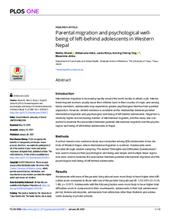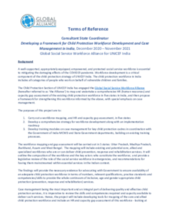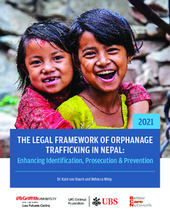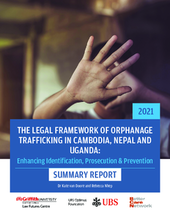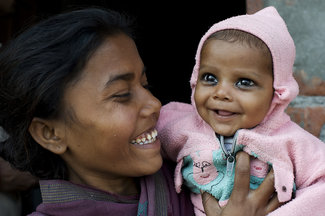

Displaying 171 - 180 of 735
The Department of Social Defense has placed 27 children in foster care in the state of Tamil Nadu after a gap of nearly six years, according to this article from the Times of India.
The present research study is an exploratory study to examine factors like lack of communication and attachment to parents, abuse, poverty and peer influence with a sample size of 100 runaway children (50 girls, 50 boys) residing in a non-governmental organisation in NCR, Delhi.
A school-based cross-sectional study was conducted among 626 adolescents in two districts of Western Nepal to examine the association between parental international migration and the psychological well-being of left-behind adolescents.
"The Juvenile Aid Police Unit (JAPU) of Chennai city police and the Child Welfare Committee (CWC) workers have sealed an unlicenced juvenile orphanage home ‘SEERS’ (Socio-Economic Education Rehabilitation Society) at Sathyamurthy Nagar in Vyasarpadi on Monday, and all the 18 juveniles were shifted to other juvenile care homes," says this article from the New Indian Express.
The present paper emphasizes on the trends of institutional care in India where the large population is poor. Keeping in view the socio-economic conditions of the country, it is an attempt to explore the challenges and living conditions of children in institutional care run by government and non-governmental organizations in the regions of Punjab and Chandigarh in northern India.
According to this article from Reuters, "police in Mumbai have charged nine alleged members of a baby-trafficking ring." They have been accused of "having bought and sold at least seven babies over a six-year period."
The Child Protection Section of UNICEF India has engaged the Global Social Service Workforce Alliance to map and undertake a comprehensive human resources and capacity gap assessment of the existing child protection workforce in five states in India. The GSSWA is seeking Consultant State Coordinators to work as part of the Alliance national consultancy team for this project.
This study explores the physical and emotional effects of parental migration on left-behind children in Nepal.
This study examines Nepal’s compliance with international legal obligations, its child protection and anti-trafficking laws, and its criminal and procedural laws that regulate illegal transfer and trafficking of children. The study also raises issues regarding victim identification, inspection of child care homes and complaint mechanisms.
This study assesses and maps the legal, policy and procedural frameworks in both domestic and international law across Nepal, Uganda and Cambodia, where orphanage trafficking continues to undermine domestic efforts to stem the overuse of institutionalisation of children.

